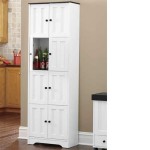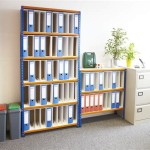Maximizing Storage Potential With Organizer Bins In SAP
Efficient storage management is critical for organizations utilizing SAP systems. The sheer volume of data generated and managed within SAP, ranging from master data to transactional data, necessitates a structured and easily accessible storage solution. In this context, organizer bins, representing logical groupings or physical storage locations within the SAP environment, play a crucial role in enhancing data retrieval, optimizing storage space utilization, and streamlining overall system performance.
The effective implementation of organizer bins within SAP transcends simply creating designated storage areas. It involves a strategic approach that considers data characteristics, access frequency, security requirements, and compliance mandates. A poorly organized storage system can lead to decreased efficiency, increased retrieval times, heightened security risks, and difficulties in meeting regulatory obligations. Conversely, a well-designed and implemented organizer bin strategy can significantly improve operational efficiency, data integrity, and overall system manageability.
Numerous SAP modules can benefit from the implementation of organizer bins, including materials management (MM), warehouse management (WM), sales and distribution (SD), and finance (FI). For instance, in materials management, organizer bins can be used to categorize materials based on characteristics such as material type, storage conditions, or vendor. In warehouse management, they can represent physical locations within the warehouse, enabling efficient putaway and picking processes. In sales and distribution, they can be used to categorize customer orders based on region, product line, or order status. In finance, they can be used to categorize financial documents based on document type, fiscal year, or business area.
The specific implementation of organizer bins will vary depending on the SAP module and the organization's specific requirements. However, certain fundamental principles remain consistent. These principles include careful planning, clear naming conventions, consistent application, and regular maintenance. Failure to adhere to these principles can result in a disorganized and inefficient storage system, negating the potential benefits of using organizer bins.
Key Point 1: Strategic Planning and Definition of Organizer Bins
The initial step in maximizing storage potential with organizer bins in SAP involves strategic planning and definition. This phase requires a comprehensive understanding of the data being stored, the purposes for which it is used, and the access patterns of different user groups. Without a clear understanding of these factors, it is impossible to design an effective organizer bin strategy.
The planning process should begin with an assessment of the current state of data storage. This assessment should identify any existing inefficiencies, such as duplicate data, underutilized storage space, or difficulty in locating specific information. The assessment should also consider the organization's future data storage needs, taking into account projected growth and any planned changes to business processes.
Based on the assessment, the organization can then define the specific types of organizer bins that will be used. This definition should include a clear description of the purpose of each bin, the types of data that will be stored in it, and the access rights that will be granted to different user groups. The definition should also specify the naming convention that will be used for the bins, ensuring consistency and ease of identification.
For example, in a manufacturing company using SAP MM, organizer bins might be defined for raw materials, work-in-progress, and finished goods. Within each of these categories, further bins might be defined based on material type, storage location, or vendor. The naming convention might include abbreviations for the material type, storage location, and vendor, allowing users to quickly identify the correct bin.
This planning phase should also encompass consideration for data retention policies. Defining how long data will be stored within each organizer bin, and the process for archiving or deleting data when it reaches the end of its retention period, is crucial for both regulatory compliance and optimizing storage space. This proactive approach prevents the accumulation of obsolete data, which can negatively impact system performance and increase storage costs.
Key Point 2: Implementation and Configuration of Organizer Bins in SAP
Once the organizer bins have been defined, the next step is to implement and configure them within the SAP system. This involves creating the bins in the appropriate SAP modules and configuring the necessary settings, such as access rights and storage limits. The specific steps involved in implementation will vary depending on the SAP module and the organization's specific requirements.
In SAP MM, for example, organizer bins can be implemented using storage locations and storage types. Storage locations represent physical areas within a warehouse or storage facility, while storage types represent different characteristics of the storage area, such as bulk storage, shelf storage, or refrigerated storage. By combining storage locations and storage types, organizations can create a detailed and granular storage system.
The configuration process should also include the definition of rules for automatically assigning data to the appropriate organizer bin. This can be achieved using SAP's configuration options and custom ABAP code. For instance, a rule could be defined to automatically assign all new purchase orders for a specific material to a designated storage location. Automating this process reduces the risk of human error and ensures consistency in data placement.
Proper testing is essential during the implementation phase. Thoroughly testing the configuration of each organizer bin ensures that data is being stored correctly and that users have the appropriate access rights. This testing should include both positive and negative scenarios, such as attempting to store data in the wrong bin or attempting to access data without the required permissions. Furthermore, integration testing is crucial to ensure that the organizer bins function correctly with other SAP modules.
Security considerations are paramount during implementation. Access rights should be carefully configured to prevent unauthorized access to sensitive data. This may involve assigning different roles and authorizations to different user groups, ensuring that each user only has access to the data that is necessary for their job function. Regular audits of access rights should be conducted to ensure that they remain appropriate.
Key Point 3: Ongoing Maintenance and Optimization of Organizer Bins
The implementation of organizer bins is not a one-time event. Ongoing maintenance and optimization are essential to ensure that the storage system remains efficient and effective. This involves monitoring storage space utilization, identifying and resolving any issues, and adapting the system to changing business needs.
Regular monitoring of storage space utilization is critical. SAP provides tools for monitoring storage space, allowing organizations to identify areas where storage is running low or where there is unused space. This information can be used to optimize the allocation of storage space and to plan for future storage needs. Analyzing growth trends can help predict when additional storage capacity will be required, allowing for proactive planning and avoiding potential disruptions.
Data quality is a crucial aspect of ongoing maintenance. Regular data cleansing activities should be performed to identify and correct any errors or inconsistencies in the data. This can involve identifying and removing duplicate data, standardizing data formats, and correcting inaccurate information. Maintaining high data quality improves the accuracy of reports and analysis, and reduces the risk of errors in business processes.
Periodically reviewing and refining the organizer bin strategy is essential to adapt to changing business needs. This may involve creating new bins, merging existing bins, or modifying the rules for assigning data to bins. It is also important to stay up-to-date with the latest SAP features and best practices for storage management. Incorporating new technologies and approaches can further enhance the efficiency and effectiveness of the storage system.
User training is an ongoing requirement. As the organizer bin structure evolves and new users are added to the system, it is important to provide adequate training on how to use the system effectively. This training should cover topics such as how to locate data in the correct bin, how to assign data to bins, and how to request access to restricted data. Properly trained users are more likely to use the system correctly, contributing to data quality and overall system efficiency.
Furthermore, regular audits of the organizer bin structure and the data stored within are invaluable for identifying potential issues and ensuring compliance with internal policies and external regulations. These audits should verify that data is being stored in the correct bins, that access rights are appropriate, and that data retention policies are being followed. Addressing any findings from these audits promptly can prevent more serious problems from arising.
In conclusion, maximizing storage potential with organizer bins in SAP requires a strategic, well-planned, and consistently maintained approach. By prioritizing careful planning, meticulous implementation, and diligent ongoing maintenance, organizations can leverage the power of organizer bins to enhance data retrieval, optimize storage space utilization, and streamline overall SAP system performance, ultimately leading to improved operational efficiency and better data governance.

Maximum Storage Bins Per Type Sap Ewm Community

Fixed Bin Concept In Sap Wm Vs Ewm Community

Moving Stock Directly To A Fixed Storage Bin Using Sap Community

Storage Bin Sorting In Sap Ewm And Activity Area A Community

Solved How To Arrange Background Job Execute Recalcula Sap Community

Upgrading From Sap Wm To Ewm Scm Cloudbook

Storage Bin Creation Methods In Sap Ewm Community

Fixed Bin Concept In Sap Wm Vs Ewm Community

Ewm Stock Consolidation For Freeing Up Storage Bin Sap Community

Storage Bin Creation Methods In Sap Ewm Community
Related Posts








